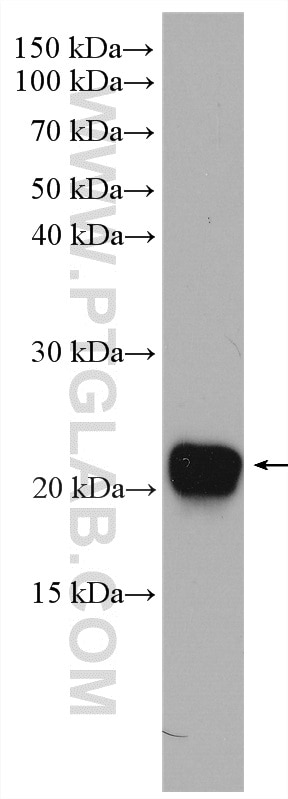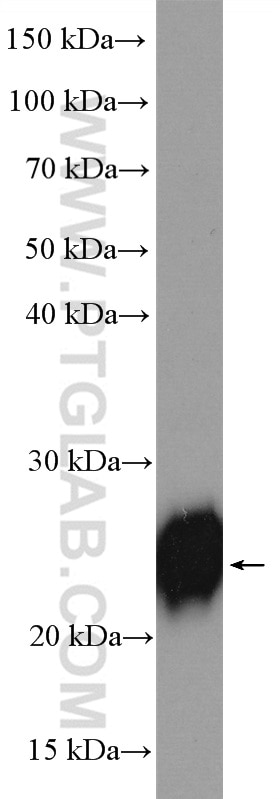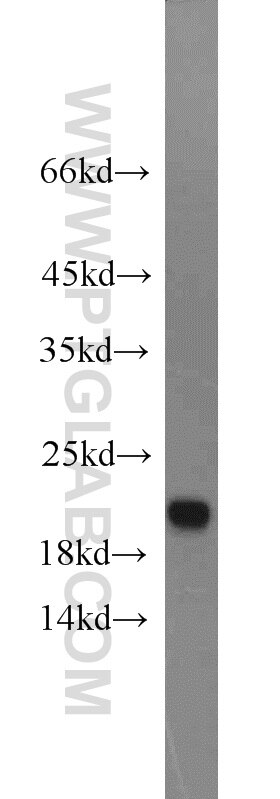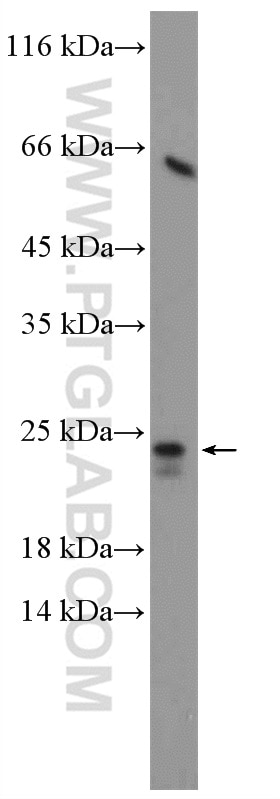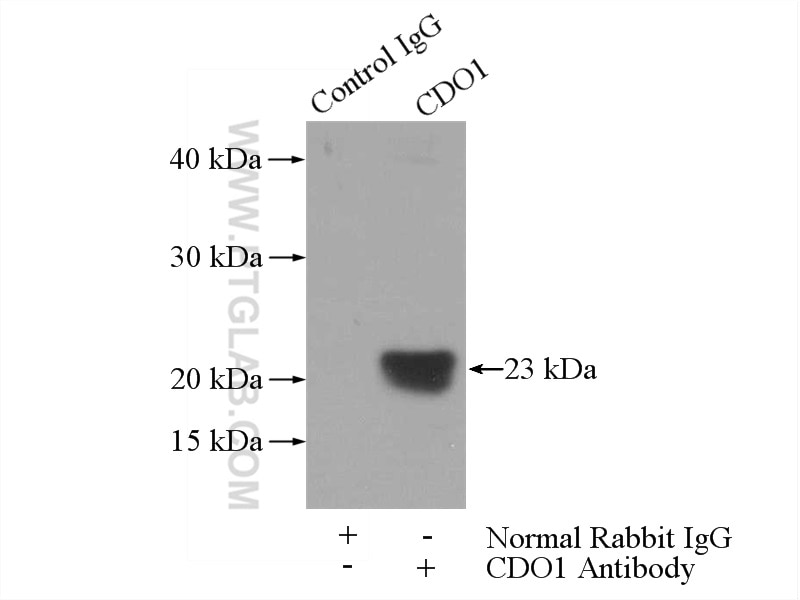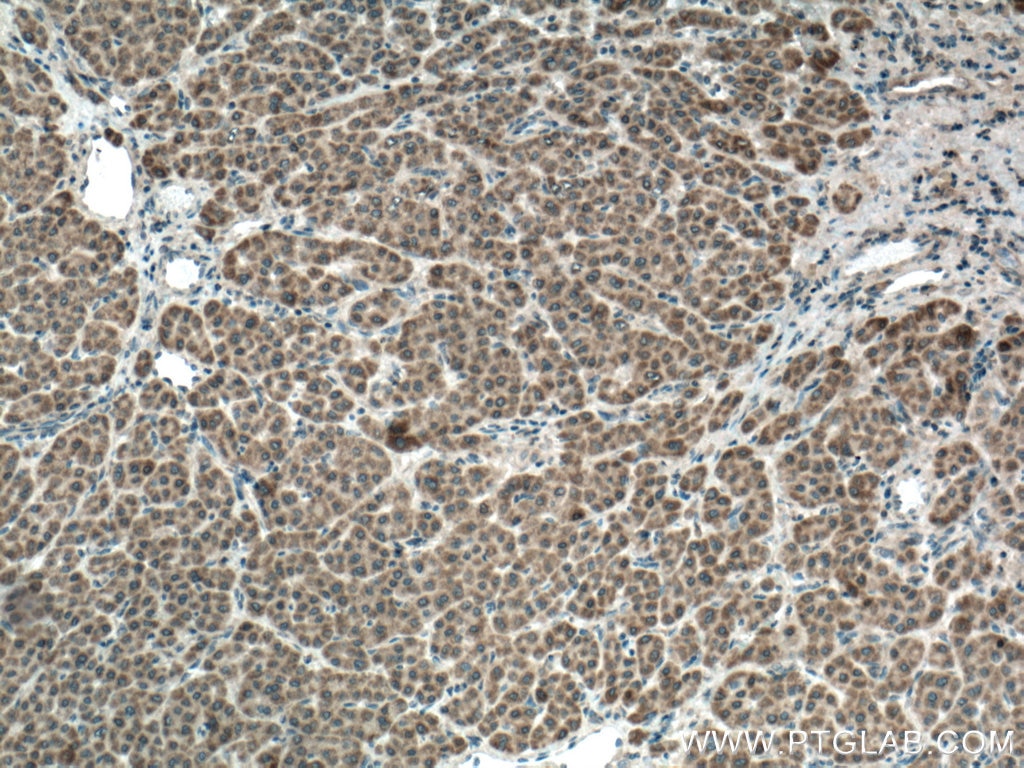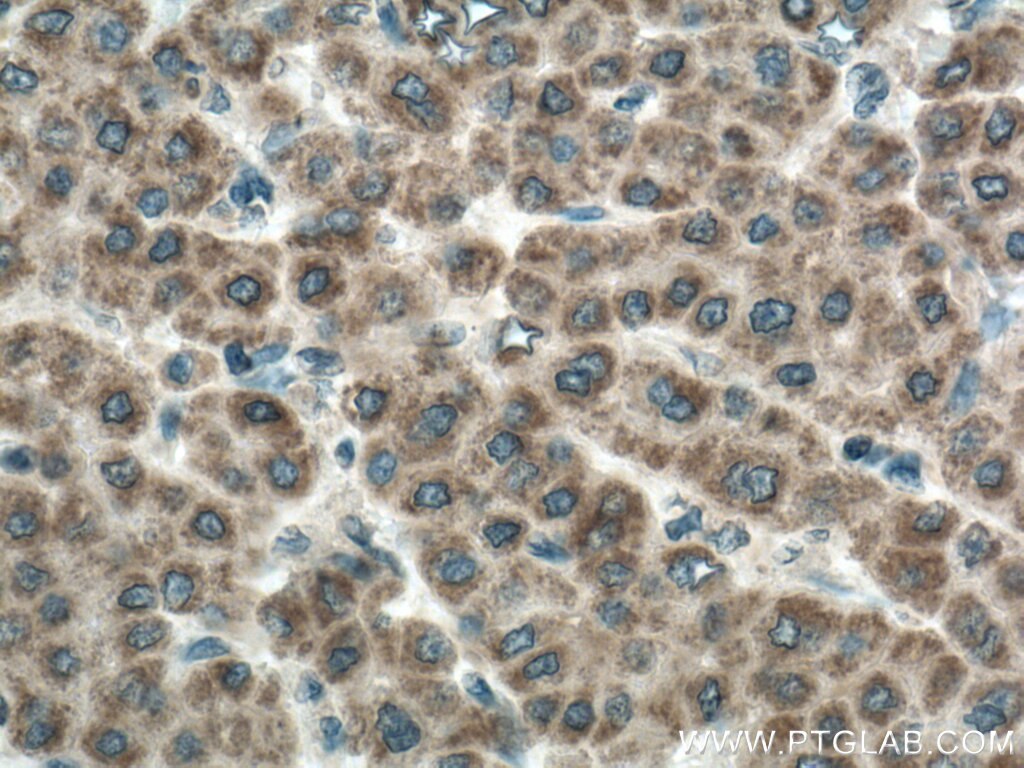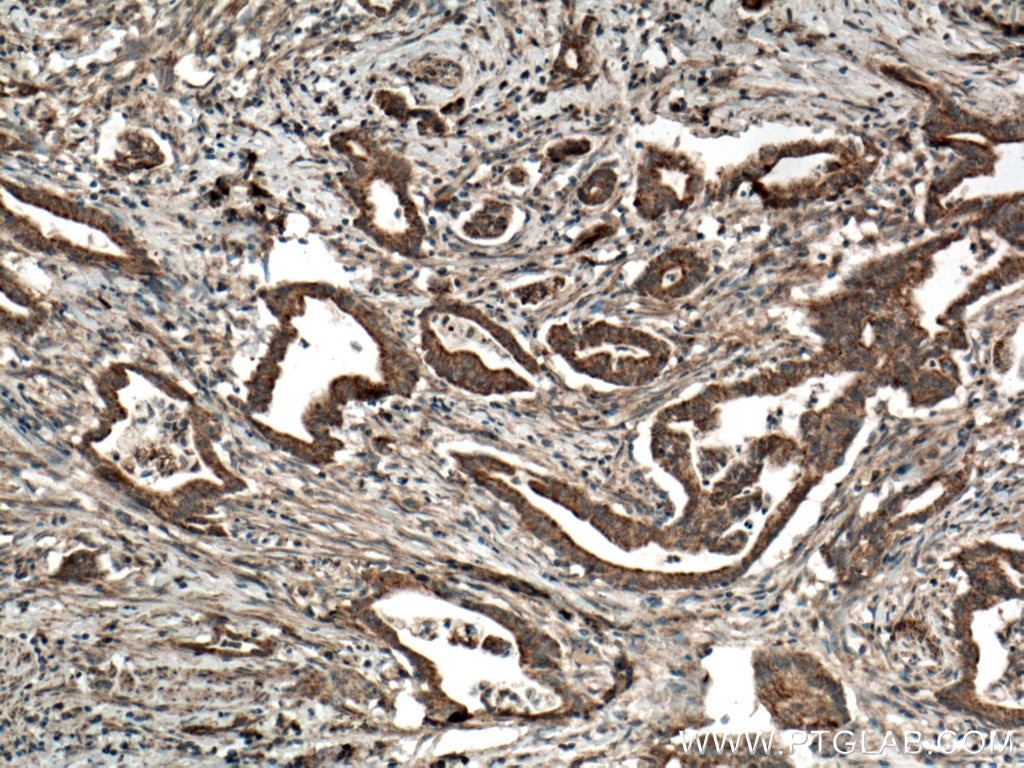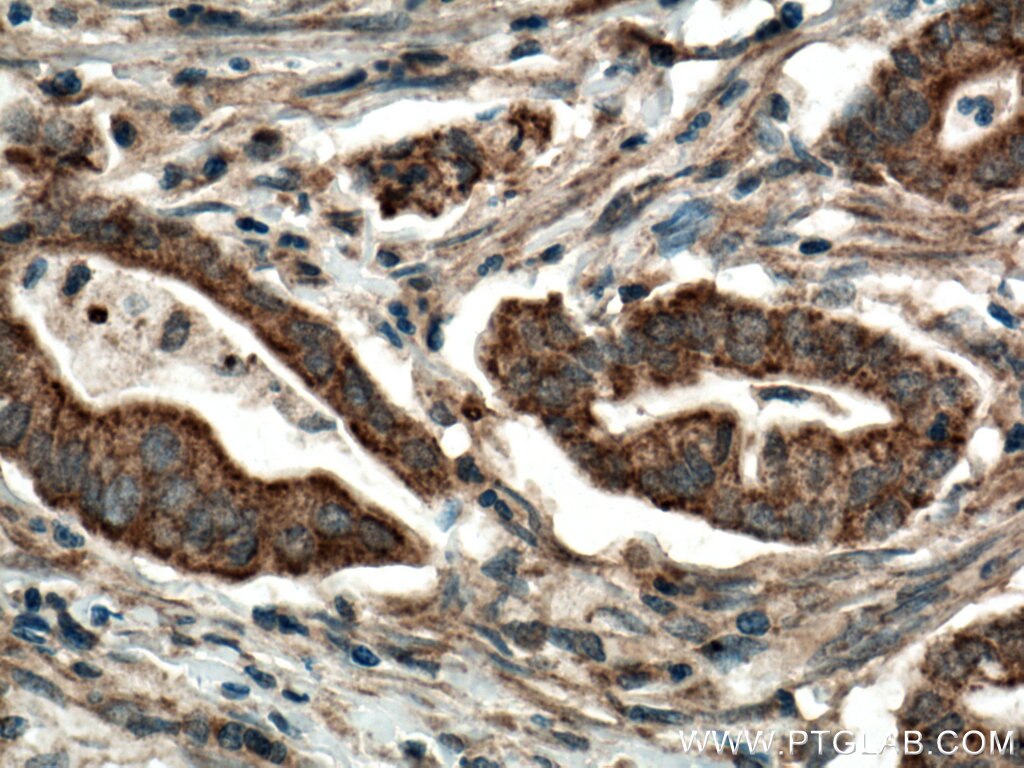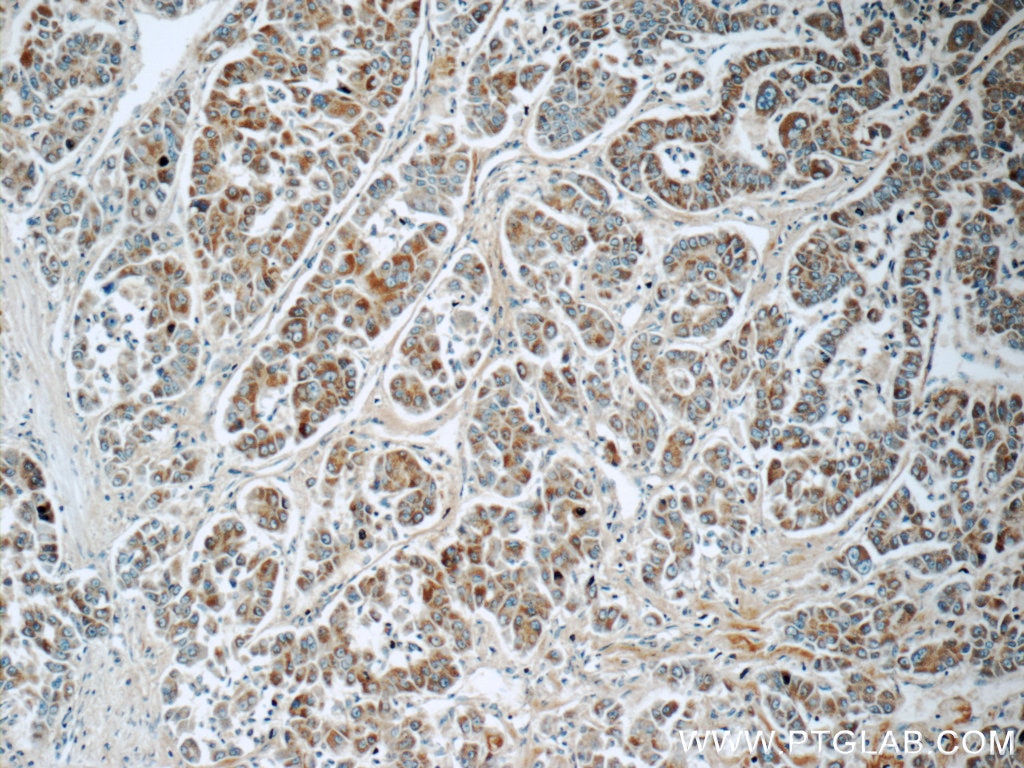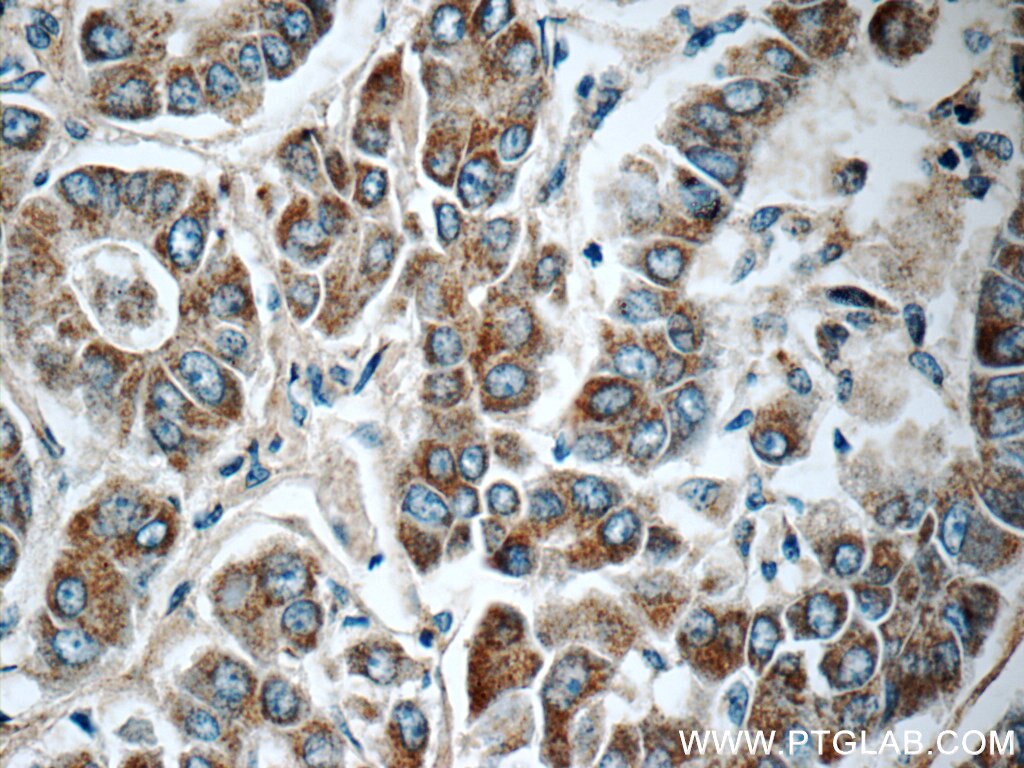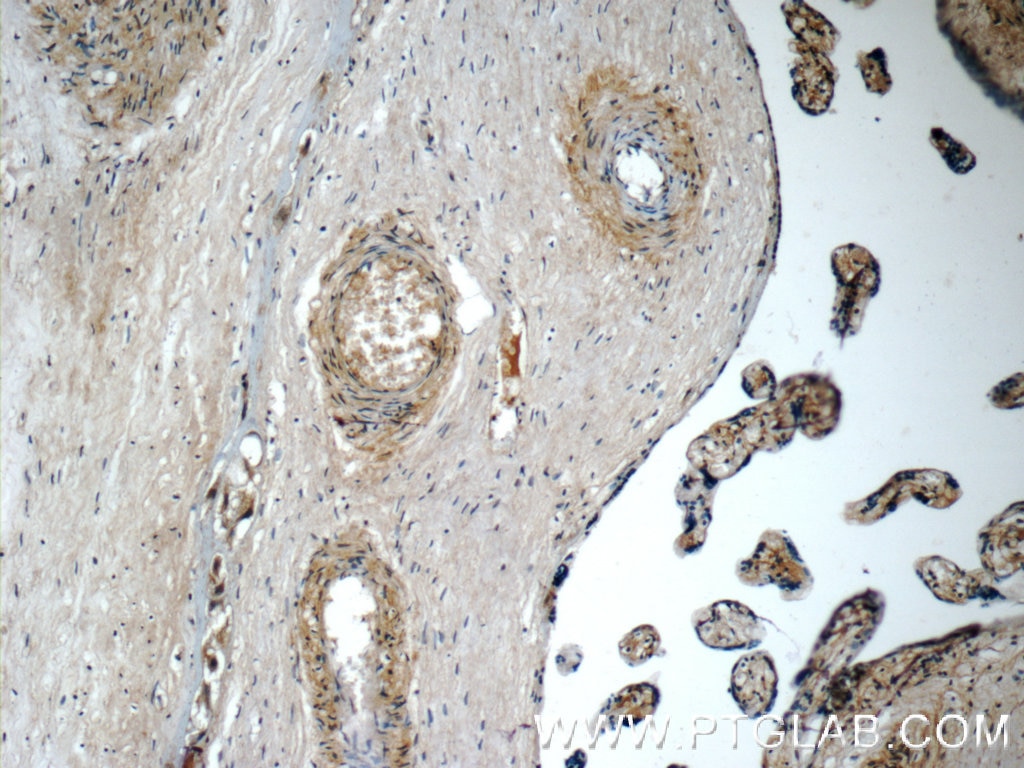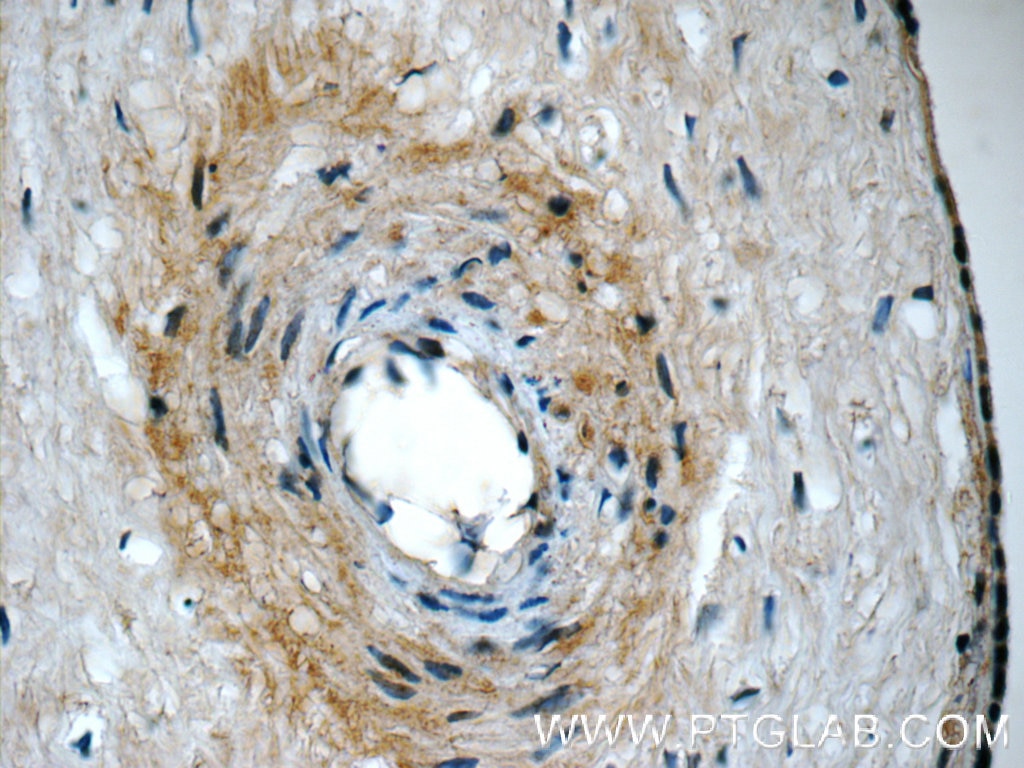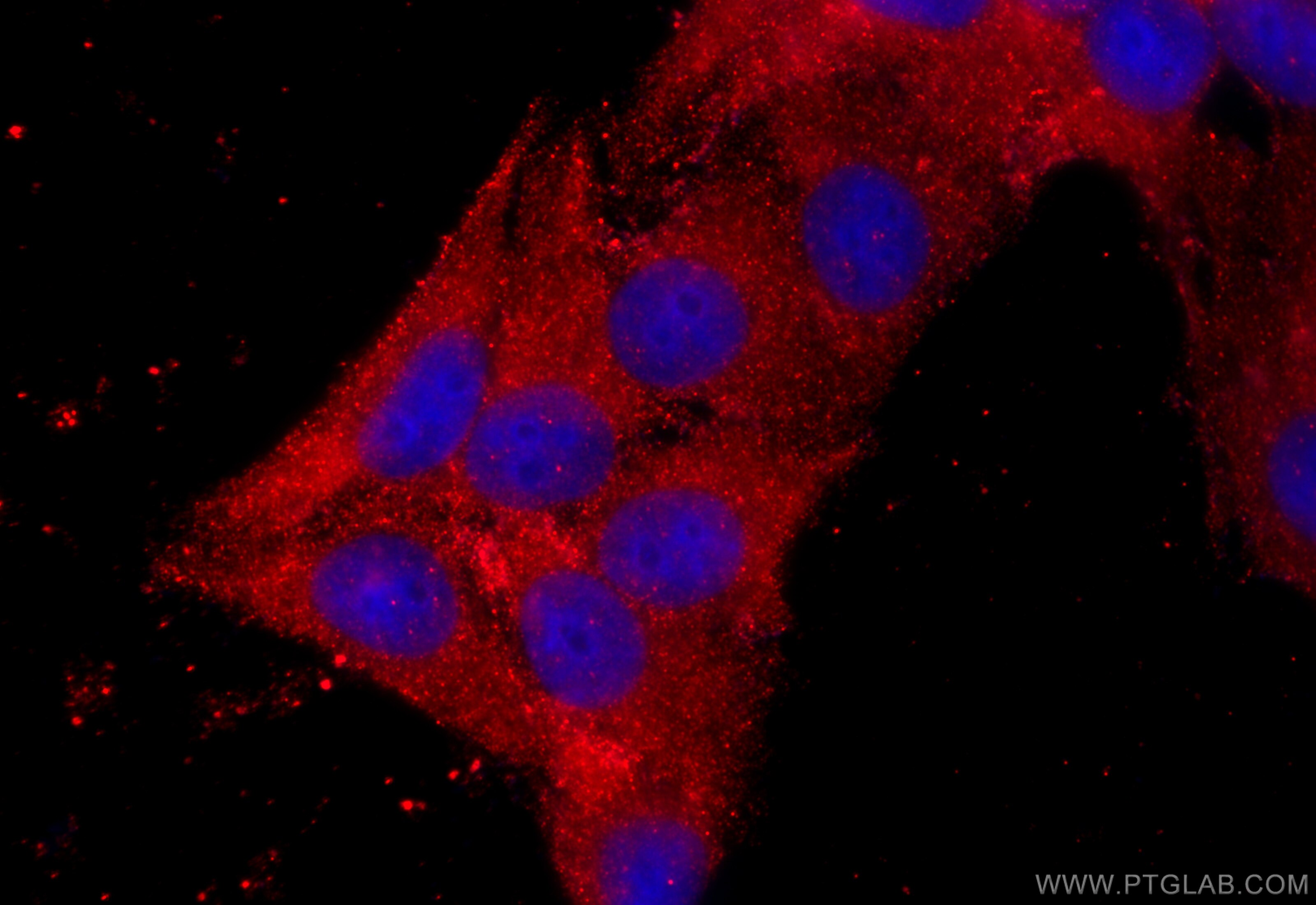- Featured Product
- KD/KO Validated
CDO1 Polyklonaler Antikörper
CDO1 Polyklonal Antikörper für WB, IHC, IF/ICC, IP, ELISA
Wirt / Isotyp
Kaninchen / IgG
Getestete Reaktivität
Hausschwein, human, Maus, Ratte
Anwendung
WB, IHC, IF/ICC, IP, ELISA
Konjugation
Unkonjugiert
Kat-Nr. : 12589-1-AP
Synonyme
Geprüfte Anwendungen
| Erfolgreiche Detektion in WB | Mauslebergewebe, Rattenlebergewebe |
| Erfolgreiche IP | Mauslebergewebe |
| Erfolgreiche Detektion in IHC | humanes Leberkarzinomgewebe, humanes Pankreaskarzinomgewebe, humanes Plazenta-Gewebe Hinweis: Antigendemaskierung mit TE-Puffer pH 9,0 empfohlen. (*) Wahlweise kann die Antigendemaskierung auch mit Citratpuffer pH 6,0 erfolgen. |
| Erfolgreiche Detektion in IF/ICC | HepG2-Zellen |
Empfohlene Verdünnung
| Anwendung | Verdünnung |
|---|---|
| Western Blot (WB) | WB : 1:1000-1:6000 |
| Immunpräzipitation (IP) | IP : 0.5-4.0 ug for 1.0-3.0 mg of total protein lysate |
| Immunhistochemie (IHC) | IHC : 1:50-1:500 |
| Immunfluoreszenz (IF)/ICC | IF/ICC : 1:200-1:800 |
| It is recommended that this reagent should be titrated in each testing system to obtain optimal results. | |
| Sample-dependent, check data in validation data gallery | |
Veröffentlichte Anwendungen
| KD/KO | See 1 publications below |
| WB | See 14 publications below |
| IHC | See 8 publications below |
| IF | See 1 publications below |
Produktinformation
12589-1-AP bindet in WB, IHC, IF/ICC, IP, ELISA CDO1 und zeigt Reaktivität mit Hausschwein, human, Maus, Ratten
| Getestete Reaktivität | Hausschwein, human, Maus, Ratte |
| In Publikationen genannte Reaktivität | human, Maus, Ratte |
| Wirt / Isotyp | Kaninchen / IgG |
| Klonalität | Polyklonal |
| Typ | Antikörper |
| Immunogen | CDO1 fusion protein Ag3294 |
| Vollständiger Name | cysteine dioxygenase, type I |
| Berechnetes Molekulargewicht | 200 aa, 23 kDa |
| Beobachtetes Molekulargewicht | 23 kDa |
| GenBank-Zugangsnummer | BC024241 |
| Gene symbol | CDO1 |
| Gene ID (NCBI) | 1036 |
| Konjugation | Unkonjugiert |
| Form | Liquid |
| Reinigungsmethode | Antigen-Affinitätsreinigung |
| Lagerungspuffer | PBS with 0.02% sodium azide and 50% glycerol |
| Lagerungsbedingungen | Bei -20°C lagern. Nach dem Versand ein Jahr lang stabil Aliquotieren ist bei -20oC Lagerung nicht notwendig. 20ul Größen enthalten 0,1% BSA. |
Hintergrundinformationen
CDO1(cysteine dioxygenase type 1) is also named as CDO and belongs to the cysteine dioxygenase family. It is an enzyme that adds molecular oxygen to the sulfur of cysteine, converting the thiol to a sulfinic acid known as cysteinesulfinic acid (3-sulfinoalanine) and CDO1 is one of the most highly regulated metabolic enzymes responding to diet(PMID:19011731). The expression of CDO can significantly decrease the level of intracellular cysteine and this reduction is also associated with a decrease in total glutathione levels(PMID:17327371). Cysteine dioxygenase (CDO) plays a critical role in the regulation of cellular cysteine concentration andmultiple forms of CDO (23 kDa, 25 kDa, and 68 kDa) have been claimed based upon separation and detection using SDS-PAGE/western blotting(PMID: 14752623).
Protokolle
| PRODUKTSPEZIFISCHE PROTOKOLLE | |
|---|---|
| WB protocol for CDO1 antibody 12589-1-AP | Protokoll herunterladen |
| IHC protocol for CDO1 antibody 12589-1-AP | Protokoll herunterladenl |
| IF protocol for CDO1 antibody 12589-1-AP | Protokoll herunterladen |
| IP protocol for CDO1 antibody 12589-1-AP | Protokoll herunterladen |
| STANDARD-PROTOKOLLE | |
|---|---|
| Klicken Sie hier, um unsere Standardprotokolle anzuzeigen |
Publikationen
| Species | Application | Title |
|---|---|---|
Cell Death Discov Cysteine dioxygenase 1 attenuates the proliferation via inducing oxidative stress and integrated stress response in gastric cancer cells | ||
Int J Biol Sci Ferroptosis-associated molecular classification characterized by distinct tumor microenvironment profiles in colorectal cancer. | ||
J Ethnopharmacol Integration of metabolomics and transcriptomics to reveal anti-chronic myocardial ischemia mechanism of Gualou Xiebai decoction. | ||
Ann Surg Oncol Promoter DNA Hypermethylation of the Cysteine Dioxygenase 1 (CDO1) Gene in Intraductal Papillary Mucinous Neoplasm (IPMN). | ||
Cell Mol Neurobiol Taurine Alleviates Chronic Social Defeat Stress-Induced Depression by Protecting Cortical Neurons from Dendritic Spine Loss. |
